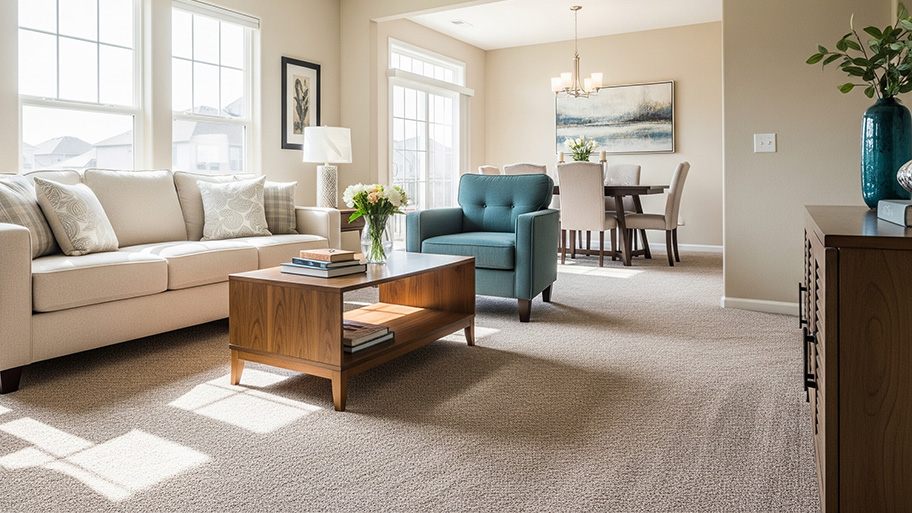
Carpet installation costs vary depending on the type of carpet, difficulty of the installation, and labor costs. We break it all down in this article.
Rug woes growing right under your nose
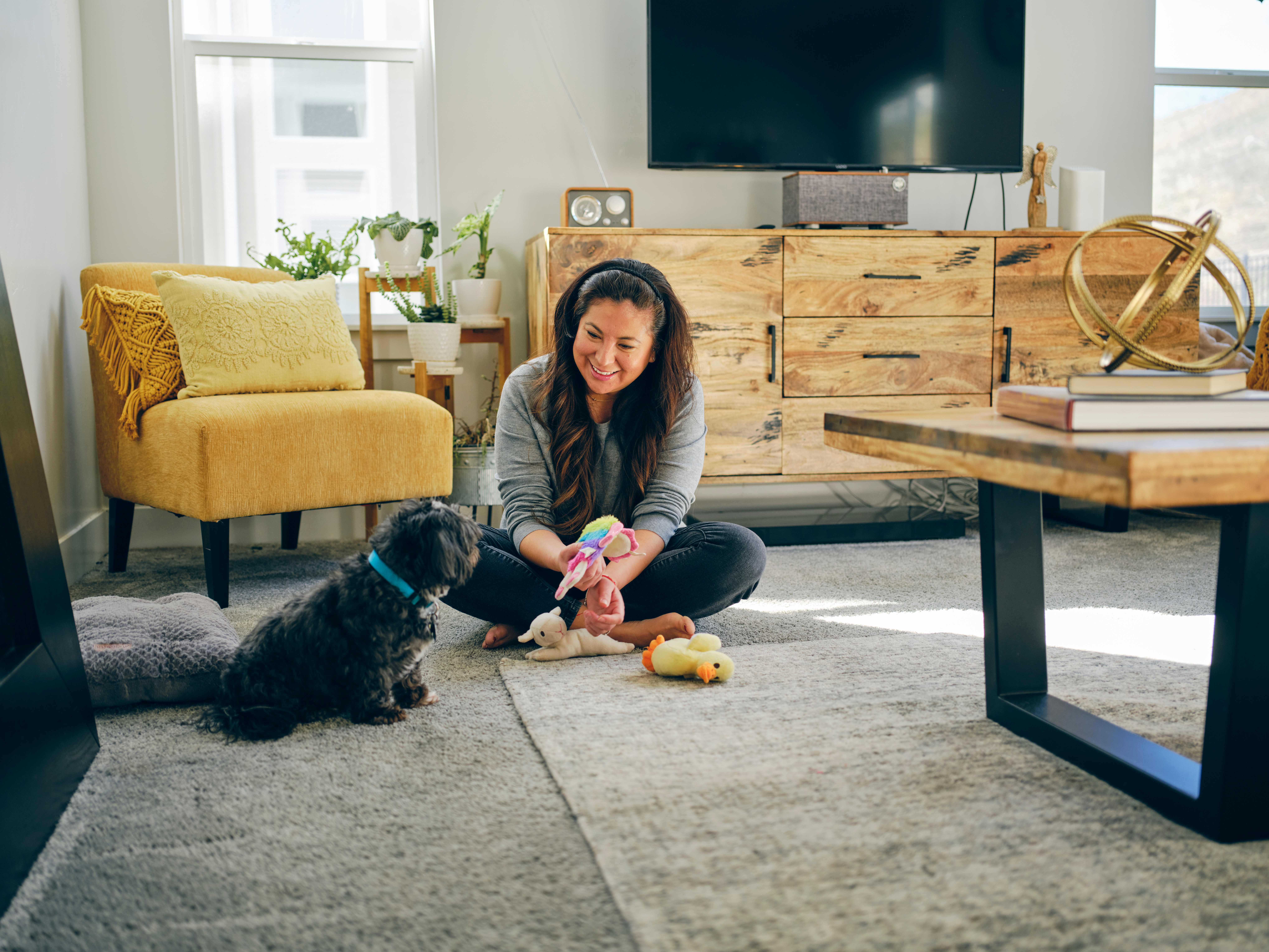

Early signs of carpet mold include odor, spots, and dampness.
DIY fixes help minor mold, but pros should handle larger growths.
You can prevent mold issues with ventilation, quick drying, and dehumidifiers.
Carpet cleaning runs $400 on average.
When moisture is introduced in your home, signs of carpet mold can show up in subtle or obvious ways, and catching them early is key to protecting both your home and your health. Mold thrives in dark, damp spaces, and your carpet can quickly become the perfect breeding ground if it’s exposed to moisture. Recognizing the warning signs allows you to take action before the damage becomes costly or dangerous.
Carpet mold isn’t just an aesthetic issue—it’s a health hazard. Mold spores can circulate in the air, aggravating allergies, asthma, and other respiratory conditions. Left untreated, mold can also damage the structural integrity of your flooring. This is why, at the first signs of mold in your home, addressing it promptly is critical for the safety of your household.
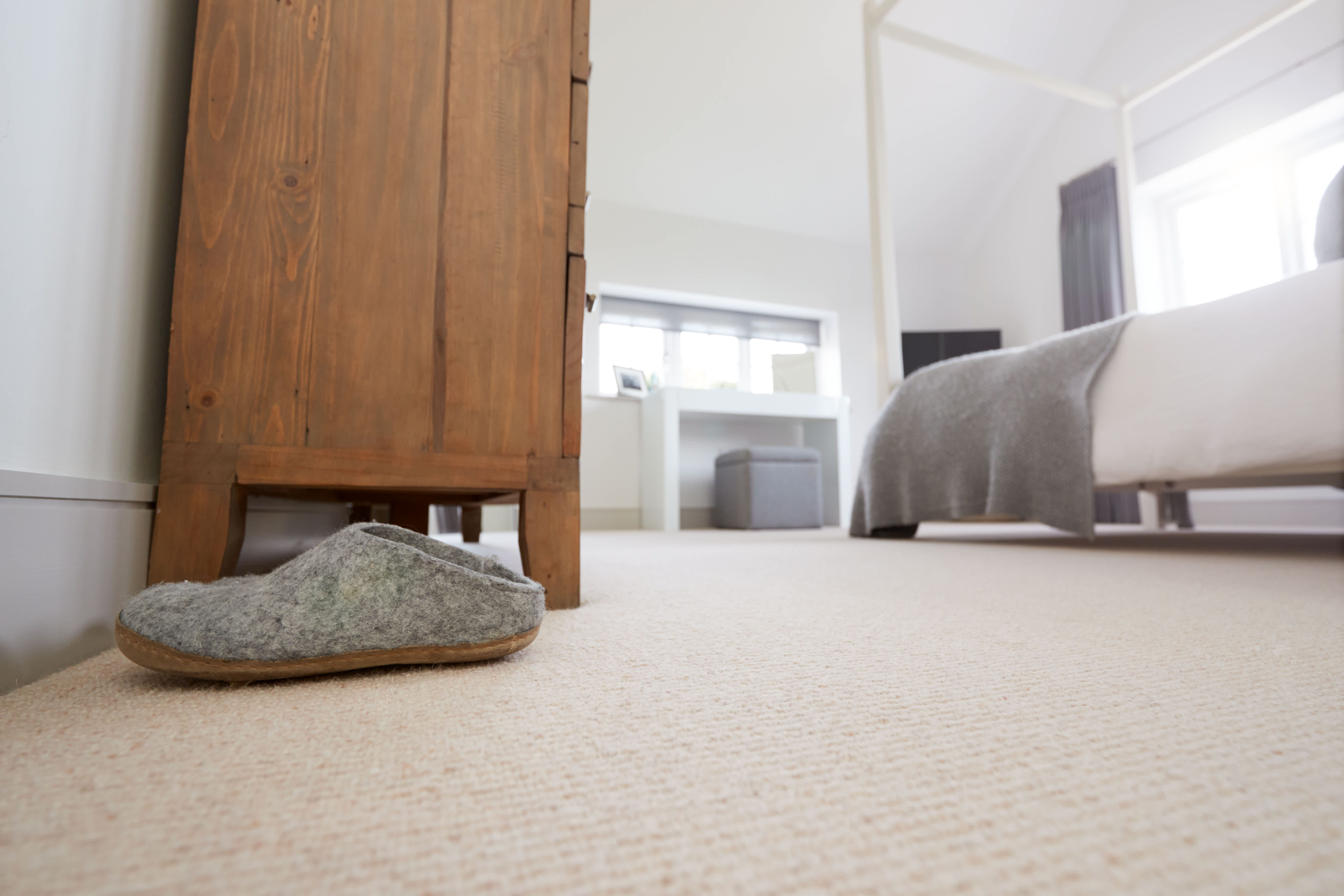
If you suspect your carpet may be harboring mold, here are the most common red flags to look for.
The most obvious indicator is seeing mold itself. These spots can appear green, black, or even white, often forming in clusters. Once you can see the mold, the infestation is already advanced and requires immediate attention.
If your carpet shows patches of unusual colors that don’t match the wear or staining you’re used to seeing, mold could be the culprit. Discoloration can appear yellow, brown, or darker than surrounding areas, especially where moisture has been present.
Mold weakens carpet fibers and padding, often causing buckling or rippling. If your once-smooth carpet now looks uneven or feels soft in certain spots, it’s a warning sign that moisture and mold may be spreading underneath.
Carpet that stays damp for more than 24 to 48 hours after a spill, leak, or flood is highly susceptible to mold growth. If your carpet feels consistently moist, mold is likely forming below the surface.
A persistent musty smell is one of the earliest and most telling signs of carpet mold. Even if you can’t see visible growth, that earthy, stale odor indicates mold spores are active in your carpet or padding.
If your carpet has been exposed to flooding, leaks, or plumbing issues in the past, mold may develop long after the initial incident. Stains, rings, or water marks are signals that the area is at high risk.
Unexplained health issues can point to hidden carpet mold. If you or your family members experience persistent allergy flare-ups, coughing, respiratory irritation, or even skin rashes when spending time in certain rooms, mold could be the hidden trigger.
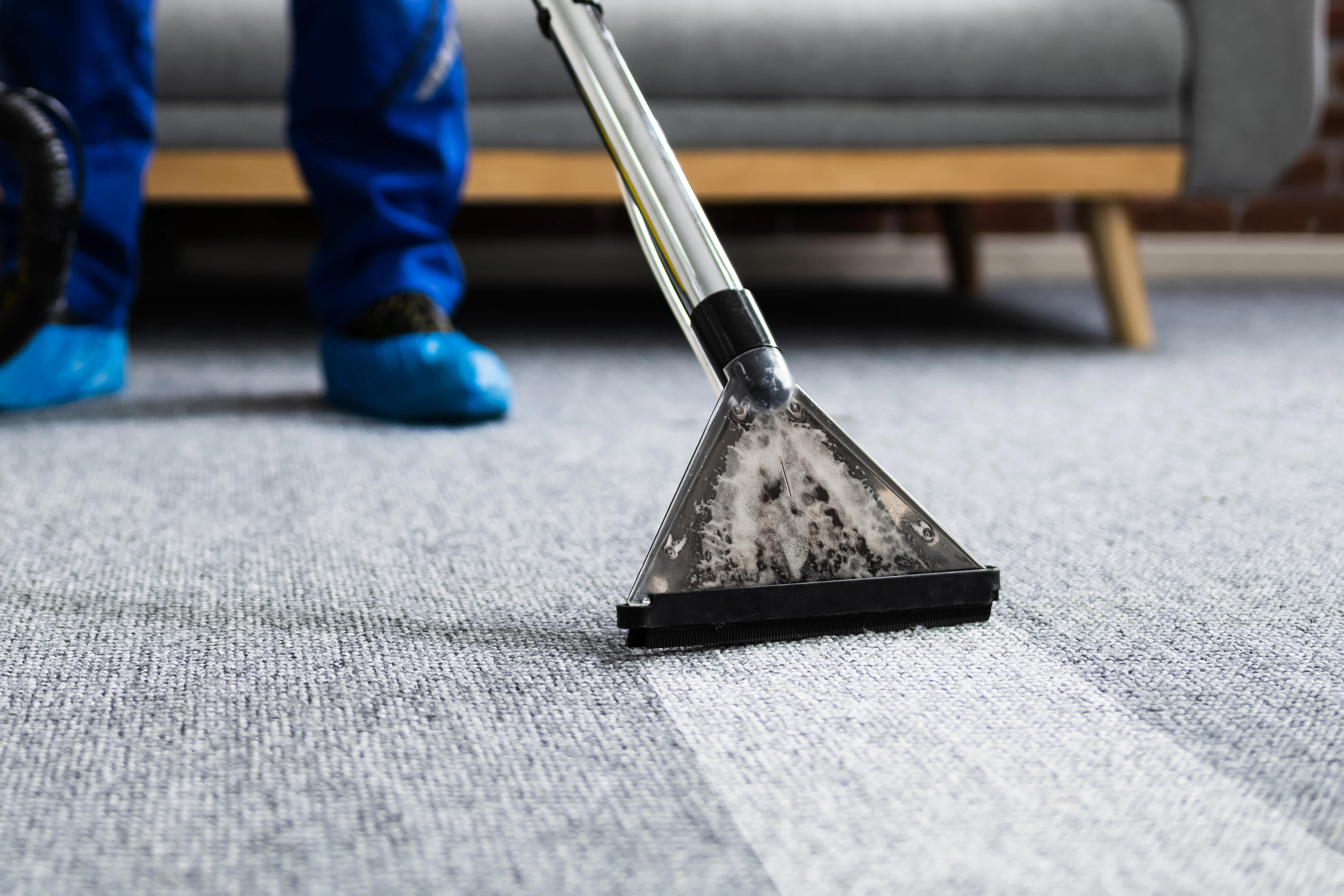
Not all mold problems can be solved with a quick DIY fix. If your carpet has large visible mold patches, a strong musty odor that won’t go away, or widespread water damage, it’s time to contact a local carpet cleaning company.
Professionals have the tools and expertise to remove mold safely, treat the underlying moisture issue, and advise whether your carpet can be salvaged or should be replaced. Attempting to handle advanced mold growth without the right equipment can be dangerous and ineffective.
Some types of mold, such as black mold, can be harmful to your health. If you suspect black mold is in your home, hiring a mold remediation pro is the only method to completely remove it.
Minor mold on the surface of a small carpet area can sometimes be treated with DIY approaches. However, if the mold has penetrated into the padding or subfloor, these solutions won’t be enough. In those cases, professional intervention is the safest and most effective approach.
Mold is notoriously persistent and often returns, especially in cases of extreme mold problems. To keep mold from making a comeback, follow these preventative steps:
Control moisture: Use dehumidifiers and proper ventilation to reduce indoor humidity.
Dry spills quickly: Always blot and dry carpet thoroughly after accidents.
Improve airflow: Open windows or use fans to keep air circulating.
Use area rugs: In moisture-prone areas like basements, opt for washable rugs instead of wall-to-wall carpet.
Schedule professional cleanings: Regular carpet maintenance helps prevent mold from developing unnoticed.
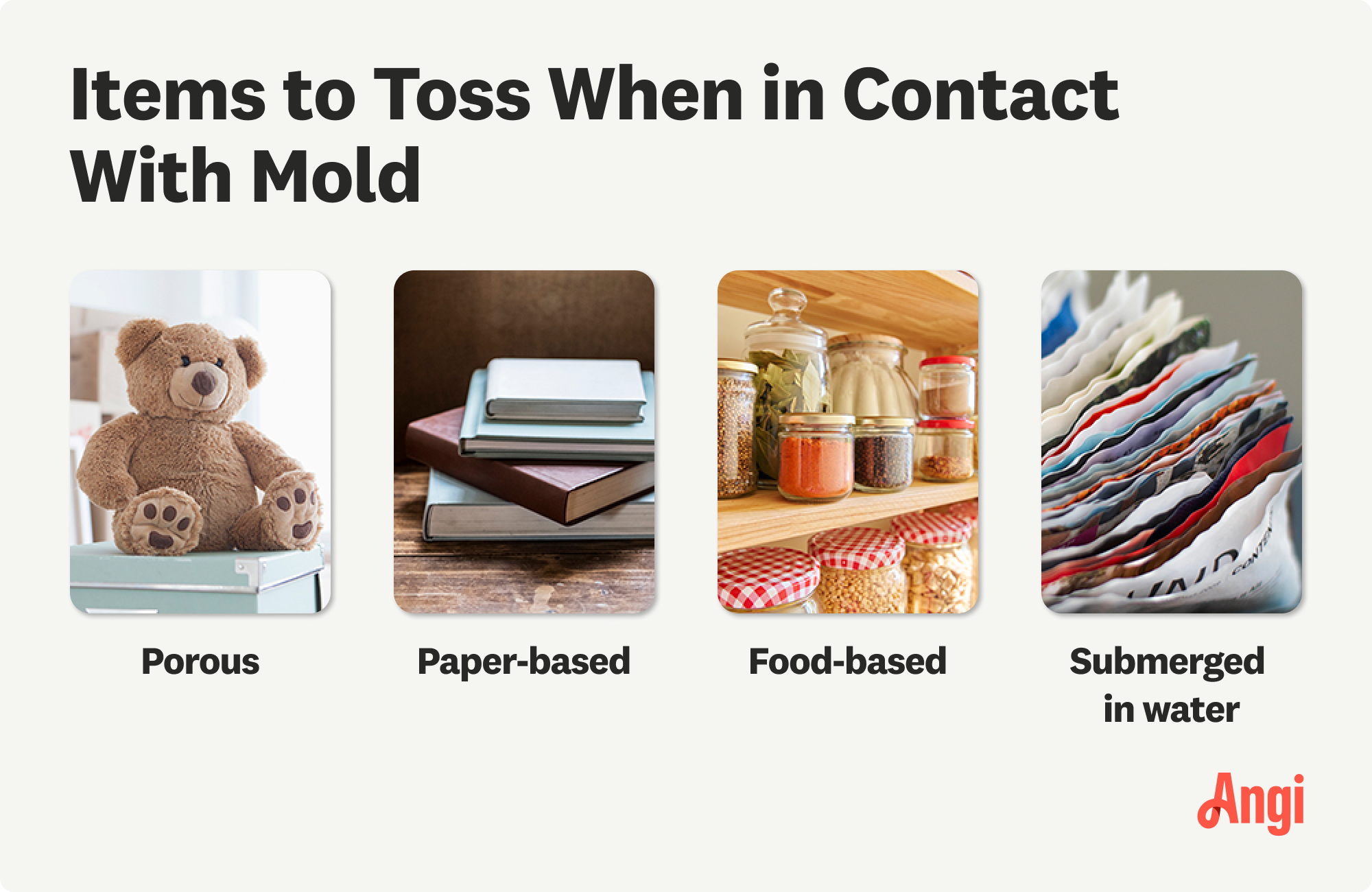
The cost of cleaning carpet or replacing it entirely depends on the extent of the mold damage. Professional carpet cleaning for mold remediation involves hot water extraction and stain removal, which costs around $400.
If the padding or subfloor is compromised, you’ll need a full replacement. Carpet replacement costs $3 to $11 per square foot, including installation. Specialty mold remediation services can increase costs further, especially if removal of moldy subflooring or drywall is required. For the best outcome and overall price, request multiple quotes from professionals to compare services.
From average costs to expert advice, get all the answers you need to get your job done.

Carpet installation costs vary depending on the type of carpet, difficulty of the installation, and labor costs. We break it all down in this article.

The cost to carpet stairs depends on the number of stairs, material choice, and staircase type. Read on to calculate your project expenses
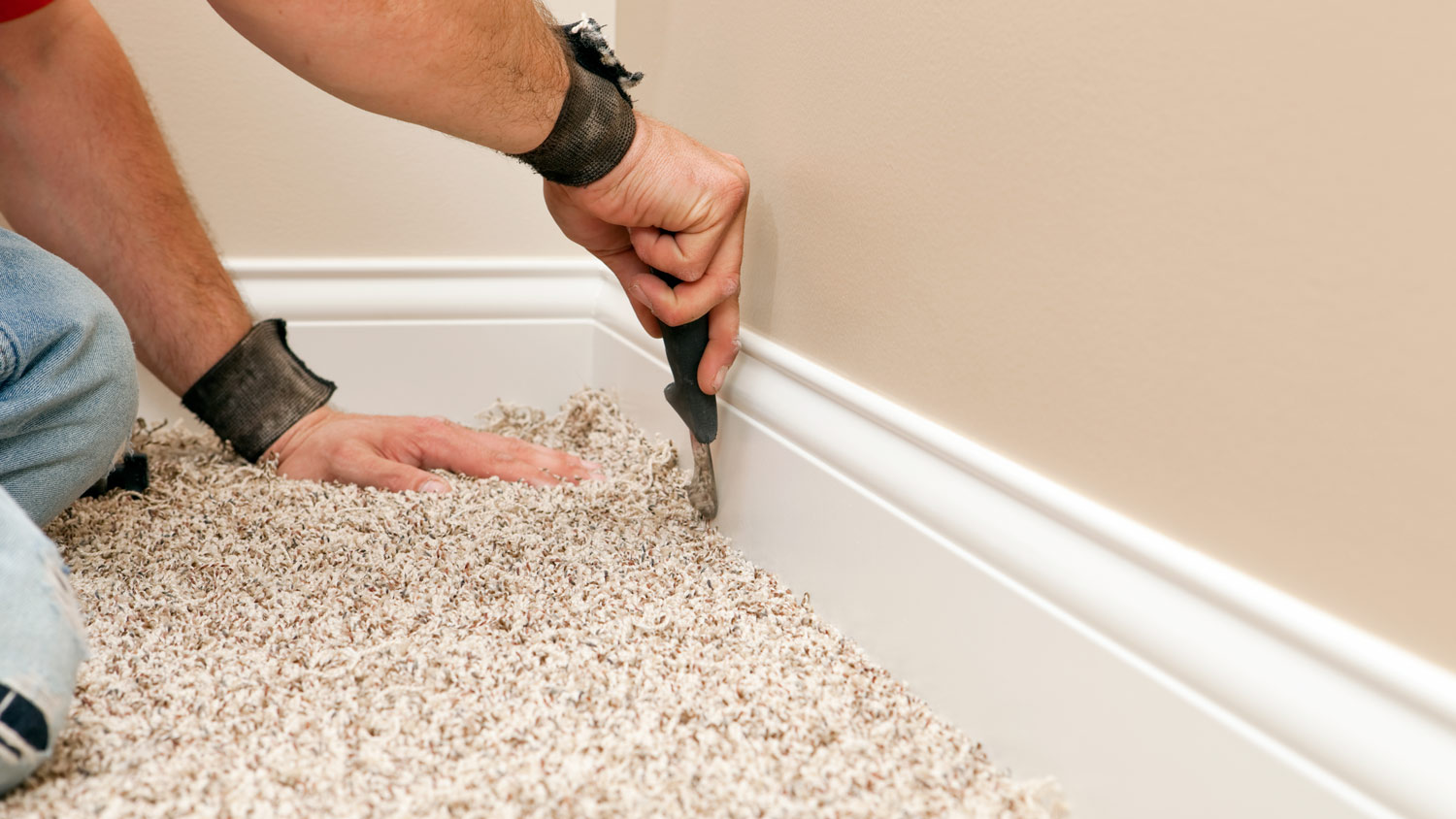
Get a clear estimate for carpet repair cost. Learn what impacts pricing, compare repair types, and find ways to save on your next carpet project.

The best carpet for stairs is durable and suited for high-traffic environments. However, they aren’t as soft and can be more expensive. Read on to learn more.
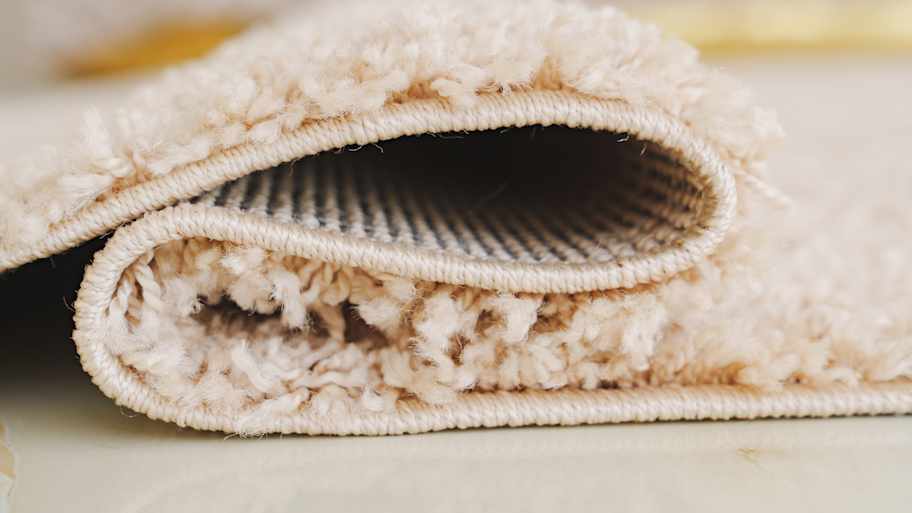
Polypropylene carpet has pros and cons to consider. It’s ideal if you’re on a budget, but be cautious when installing it in high-traffic areas.
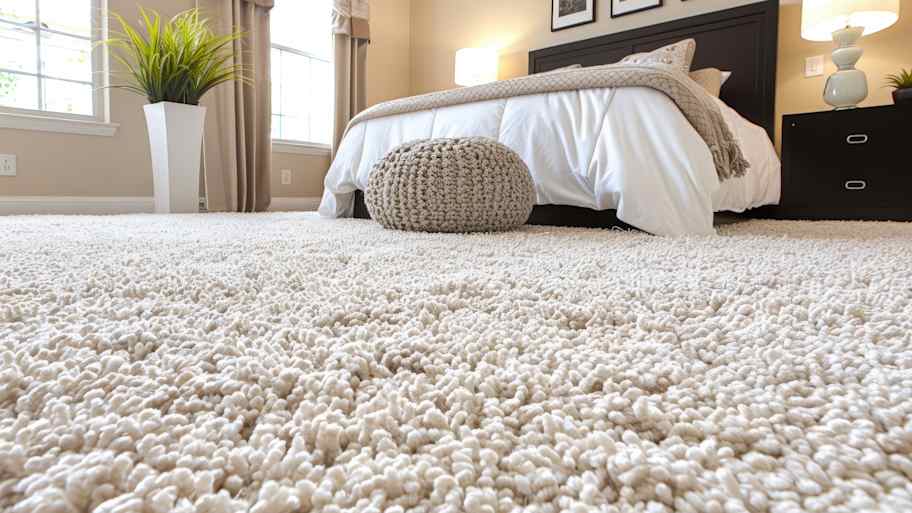
Twist is a soft, durable, and versatile carpet, but it does have its drawbacks. Consider these twist carpet pros and cons for your next flooring project.